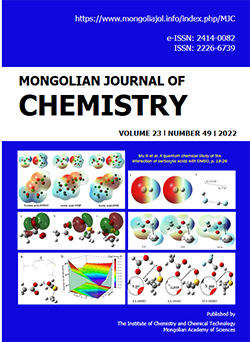Efficiency of KOH-activated carbon for removal of heavy metal pollution from water
DOI:
https://doi.org/10.5564/mjc.v23i49.1406Keywords:
KOH-activated carbon, heavy metals, surface characterization, adsorption isothermsAbstract
The study to reduce heavy metals pollution from water using the KOH-activated carbon was studied the factors affecting the adsorption capacities of Cu(II) and Pb(II), in particular, initial metals concentration, pH of the solution, and contact time in static conditions. Using X-ray photoelectron spectroscopy and FTIR analysis to determine the elemental composition and surface functional groups of the activated carbon surface, the presence of oxygen-related functional groups was observed. The maximum adsorption capacities were 135.8 mg g-1 and 31.0 mg g-1 for removal of lead and copper solutions with the initial concentration of 300 mg L-1 of metal at 318 K, respectively. The removal percentage was found to be higher for Pb (II) when compared with Cu (II).
Downloads
677
Downloads
Published
How to Cite
Issue
Section
License
Copyright (c) 2022 Narandalai Byamba-Ochir, Nazgul Muratbyek, Narangarav Tumen-Ulzii, Ariunaa Alyeksandr, Nasantogtokh Oyunchimeg

This work is licensed under a Creative Commons Attribution 4.0 International License.
Copyright on any research article in the Mongolian Journal of Chemistry is retained by the author(s).
The authors grant the Mongolian Journal of Chemistry a license to publish the article and identify itself as the original publisher.

Articles in the Mongolian Journal of Chemistry are Open Access articles published under a Creative Commons Attribution 4.0 International License CC BY.
This license permits use, distribution and reproduction in any medium, provided the original work is properly cited.








